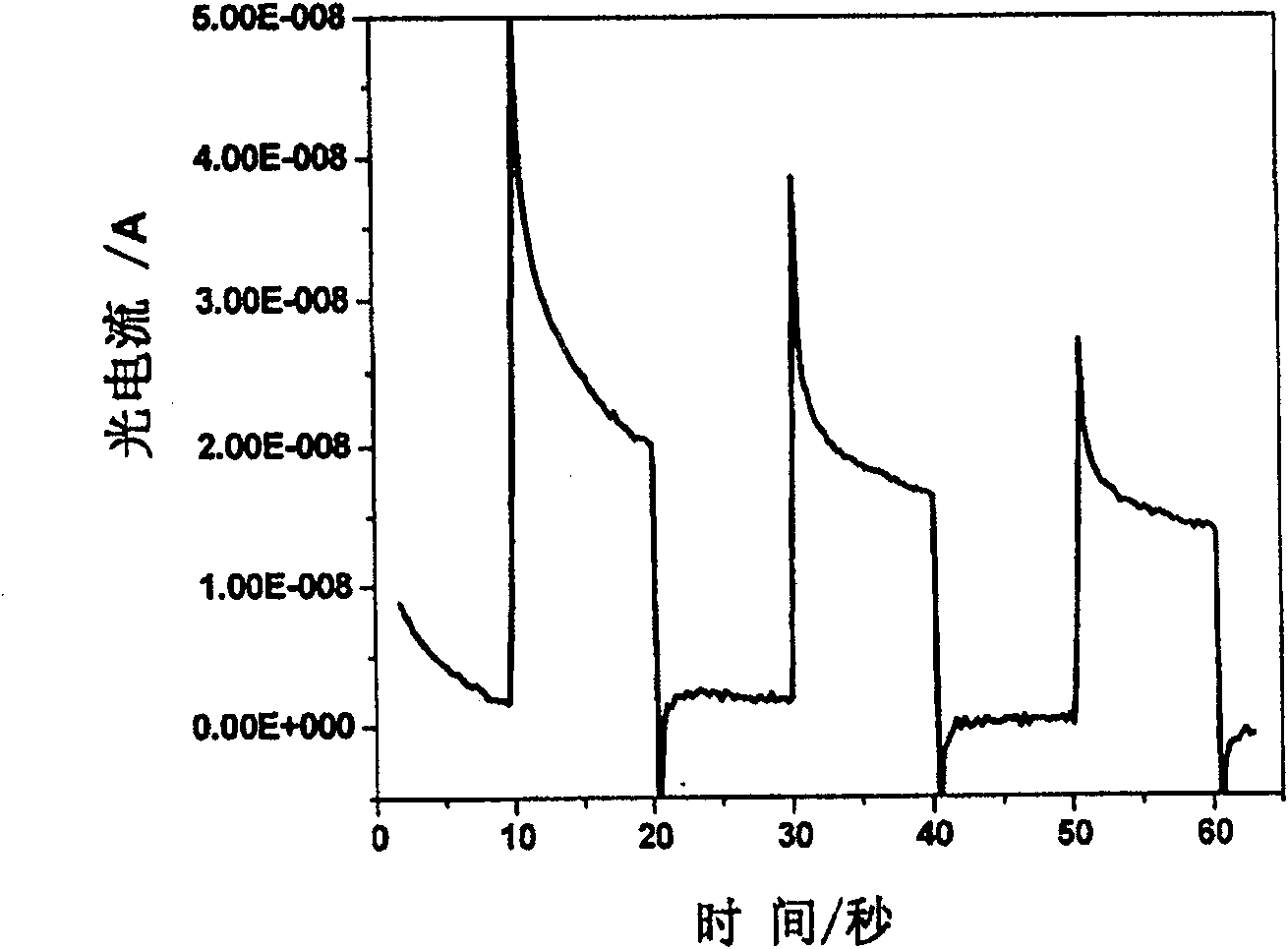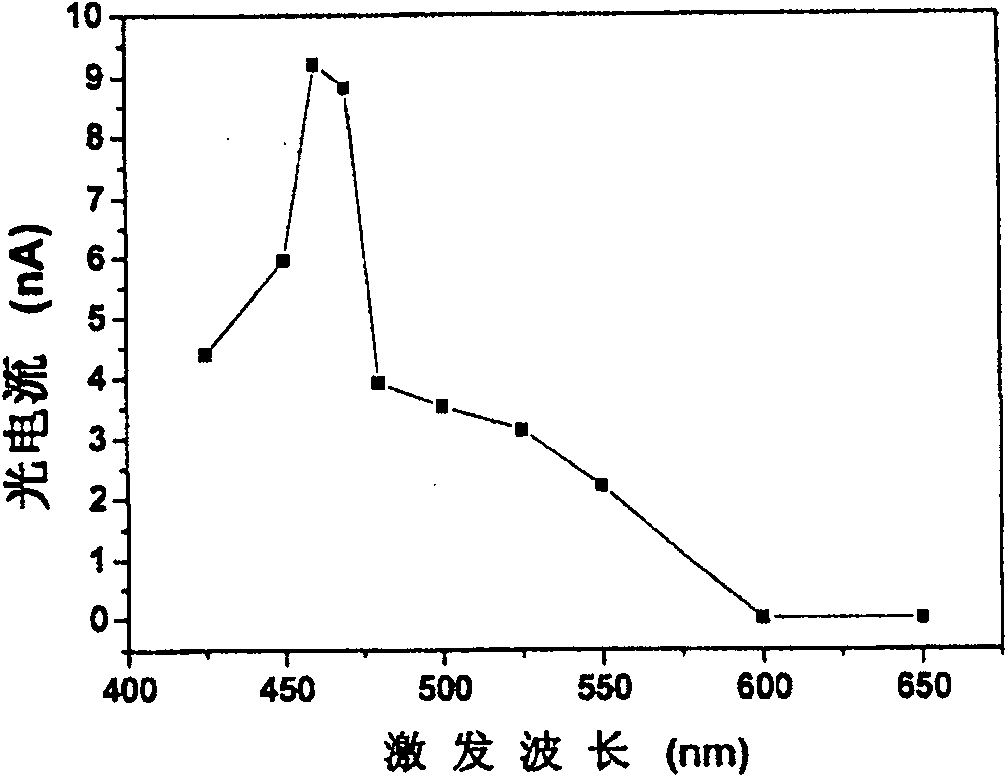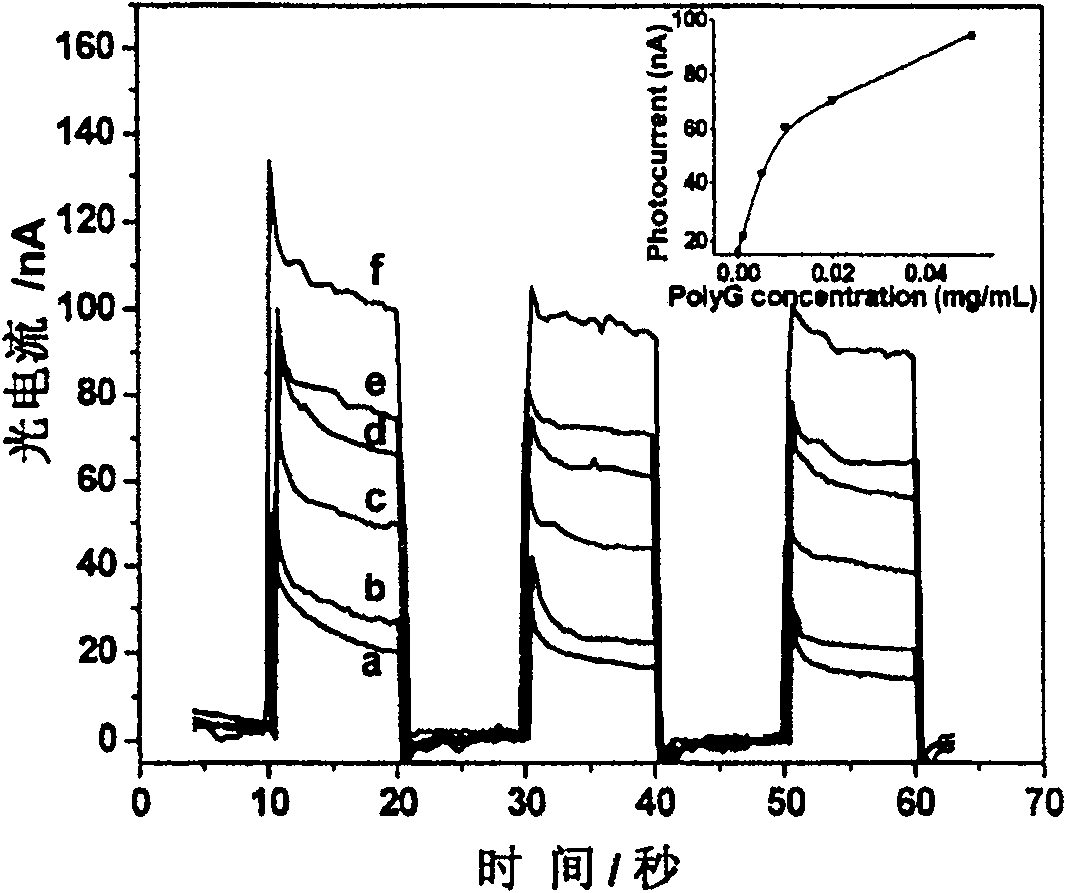Photo-electro-chemical method for detecting nucleic acid
A photoelectrochemical and nucleic acid technology, applied in biochemical equipment and methods, measuring devices, scientific instruments, etc., can solve problems such as limited detection range and limited selection range of signal molecules
- Summary
- Abstract
- Description
- Claims
- Application Information
AI Technical Summary
Problems solved by technology
Method used
Image
Examples
preparation example Construction
[0062] 1. Preparation of Nano-SnO Semiconductor Electrode
[0063] The indium tin oxide conductive glass was ultrasonically washed with detergent (15 minutes), pure water (2 minutes, twice), acetone (5 minutes), isopropanol (5 minutes) and pure water (10 minutes, twice) , blow dry, take the tin dioxide colloidal solution with a particle size of 15nm and evenly spread it on the ITO electrode plate. After drying, sintering at 450° C. for 1 hour, cutting into small electrode pieces of 0.5 cm×2.5 cm to obtain nanometer tin dioxide semiconductor electrodes.
[0064] 2. Preparation of ruthenium complex-labeled avidin
[0065] Put 2mg of avidin (concentration: 10mg / mL, volume: 200uL, solvent: 30mM phosphate buffer, pH 8.0) into 30uL containing 0.7mg ruthenium bis(2,2'-bipyridine) (4'-methyl -4-carboxy-2,2'-bipyridine)-succinamide ester in anhydrous N,N-dimethylamide solution, and shake the reaction for 90 minutes in the dark. The unlabeled ruthenium complex is separated by centrif...
Embodiment 1
[0069] Photocurrent measurement
[0070] Photocurrent was measured on a CHI 630 Electrochemical Analyzer in time-based mode. The light source is a 20mW laser with a wavelength of 470nm. The micro photoelectrochemical cell is made of polished glass, the reference electrode is Ag / AgCl, and the counter electrode is platinum electrode. The light beam is injected vertically into the cell, where it hits a tin dioxide electrode on its back side. Manually move the opaque cardboard to make the light beam irradiate the electrodes regularly and intermittently. The ruthenium bipyridine complex has an absorption maximum at 470nm.
[0071] Such as figure 1 As shown, the nano-tin oxide electrode adsorbed with Ru-Avidin was placed in a photoelectrochemical cell in 20 mM phosphate buffer, pH 5.5. Block the light beam with a cardboard at the beginning of the measurement, and pull the cardboard away every 10 seconds. It can be seen that the photoelectrochemical substance ruthenium complex ...
Embodiment 2
[0074] Detection of guanine-catalyzed photocurrents
[0075] Dilute guanine nucleotides with 20mM phosphate buffer pH 5.5 to the following concentration gradients: 1μg / mL, 5μg / mL, 10μg / mL, 20μg / mL and 50μg / mL. Add the diluted guanylic acid solution into the photoelectrochemical cell for photoelectric detection, and obtain photocurrents catalyzed by different concentrations of guanylic acid. The result is as image 3 Shown (a is 0 μg / mL; b is 1 μg / mL; c is 5 μg / mL; d is 10 μg / mL; e is 20 μg / mL; f is 50 μg / mL). The results of this experiment show that the base guanine has a strong catalytic effect on the photocurrent generated by the photoelectrochemical substance, and the higher the concentration, the stronger the catalytic effect.
PUM
 Login to View More
Login to View More Abstract
Description
Claims
Application Information
 Login to View More
Login to View More - R&D Engineer
- R&D Manager
- IP Professional
- Industry Leading Data Capabilities
- Powerful AI technology
- Patent DNA Extraction
Browse by: Latest US Patents, China's latest patents, Technical Efficacy Thesaurus, Application Domain, Technology Topic, Popular Technical Reports.
© 2024 PatSnap. All rights reserved.Legal|Privacy policy|Modern Slavery Act Transparency Statement|Sitemap|About US| Contact US: help@patsnap.com










